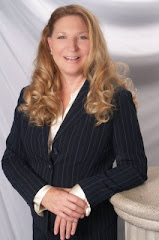it a great idea to share.
Twelve Tips to Make Your Move Simple and Stress-Free (MCT)
Packing your belongings and moving is often fraught with high emotions and involves a to-do list a mile long. So, it’s tempting to give only passing attention to hiring a mover and the related incidental costs. That could be a mistake—for your wallet and your peace of mind. Moving can be quite expensive. A typical full-service interstate move costs about $4,300, while the same in-state move might cost about $2,500, according to the American Moving & Storage Association. And while the moving industry has many fine companies, it is notorious for fraud and dirty tactics by so-called rogue movers.
Here are 12 tips to make your move simple and avoid the hassle.
Choose a type of move: You have three basic choices: do-it-yourself, full service and a relatively new hybrid of the two. Going it alone is the cheapest alternative, costing the rental price of a truck, gasoline, packing materials and, perhaps, pizza and beer for friends you rope into helping. With full-service moves, moving within a state is charged by the hour, while moving across state lines is charged by weight and mileage.
With a hybrid move, a mover will drop off a large container at your home for you to pack. The mover will then load the container onto a truck, drive the belongings to your new location and drop off the container for you to unload. Because you’re doing the manual labor of packing and unpacking, it’s far less costly than a full-service move.
Hire a quality mover: If you hire help, get at least three price quotes and do your homework before selecting a mover. Seek recommendations by talking with family and friends, even your Facebook circle. Investigate a company’s reputation with the Better Business Bureau (bbb.org), Yelp.com
Check a company’s complaint history at the federal government site, ProtectYourMove.gov.
“People think a good reputation equals expensive, but that’s not true,” said Laura McHolm, co-founder of NorthStar Moving in Los Angeles. “You don’t get a good reputation by overcharging people.”
Look for two things when hiring a moving company:
1. A full-service mover should visit your home in person,
2. And not give a quote over the phone or online, and should provide a written estimate, experts say.
Declutter: No matter what type of move you’re making, taking less stuff is cheaper and less hassle. Set up a staging area, perhaps in a garage, with various piles, such as throw out, recycle, donate and sell. For many items, use the rule of thumb, ‘If you haven’t used it in a year, you probably don’t need it.’
Be flexible: Like airline fares, moving rates depend on when you book. The busiest time for movers, and thus the most expensive time for consumers, is summer weekends near the 15th and 30th of the month. If you have time flexibility, ask what rates would be for different days or seasons. If you have extreme flexibility, ask about moving standby: waiting until the mover has extra space and needs to fill a truck.
Save on boxes: Buying new boxes from a moving company is the most expensive choice. To save some money on packing materials, ask if you can buy used boxes from your moving company, visit the grocery store and see if they have apple boxes etc.
Cheaper yet is finding free boxes, ideally from somebody who just moved. Ask your real estate agent to connect you with other clients who recently moved. Specialty boxes, such as wardrobe boxes, might be cheaper to purchase at a do-it-yourself moving store, such as U-Haul, than from your mover.
Save on packing materials: If you’re packing your belongings yourself, fill suitcases, laundry baskets and plastic containers with unbreakable items. Use pillows, scarves and towels to wrap fragile belongings.
Mail books: If you have a large collection of books, pack them yourself and ship them at the postal media mail rate as it might be cheaper than paying a mover—a 70-pound box would cost less than $30.
Consider consolidation: For long-distance moves, ask about consolidating your stuff on a truck with other people’s as most homeowners can’t fill a full-size moving van. You might have to be flexible on delivery dates and times, but consolidation can be cheaper.
This is very IMPORTANT - Insure it: Check your homeowner’s or renter’s insurance policy to determine whether it provides coverage for your belongings while in transit. If not, you’ll probably want more than the basic free valuation coverage a full-service mover provides. The standard valuation is 60 cents per pound per item. That means breaking a 10-pound, $1,000 stereo system would net you $6. You’ll want full replacement-value insurance, which reimburses you what it will cost to replace broken items. But don’t necessarily buy that insurance from the moving company. Moving insurance is likely cheaper from a third party, but be aware that you probably cannot get insurance on boxes you packed yourself.
Be prepared: Plot out where furniture and boxes will go before moving day arrives. The less time movers spend rearranging, the less expensive it will be. In urban areas, reserve a space or two in front of your new home for the moving truck by parking your own vehicle there ahead of time. If the movers have to park too far away to unload, you could incur a ‘long carry’ surcharge.
Stake your claim: If you’re moving for a job, negotiate the best relocation package you can. Unreimbursed expenses might be tax-deductible. For details, see Publication 521 Moving Expenses at IRS.gov.
Tip: Tipping each mover $3-$5 per hour is customary, said Stephen Coady, marketing manager for Gentle Giant Moving Co. in Somerville, Mass.
(c) 2010, Chicago Tribune. Distributed by McClatchy-Tribune Information Services.





































